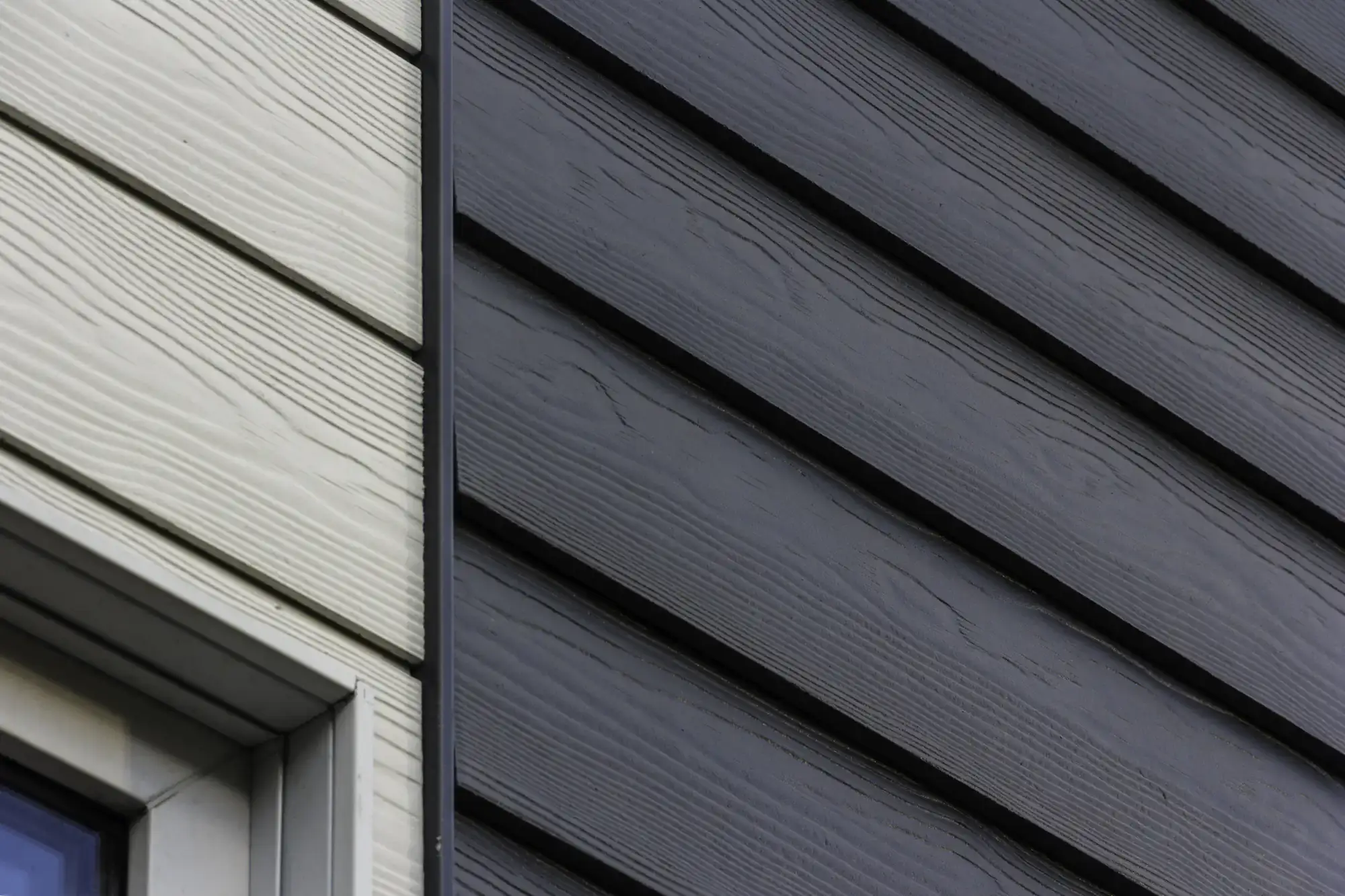
Hear from Our Customers
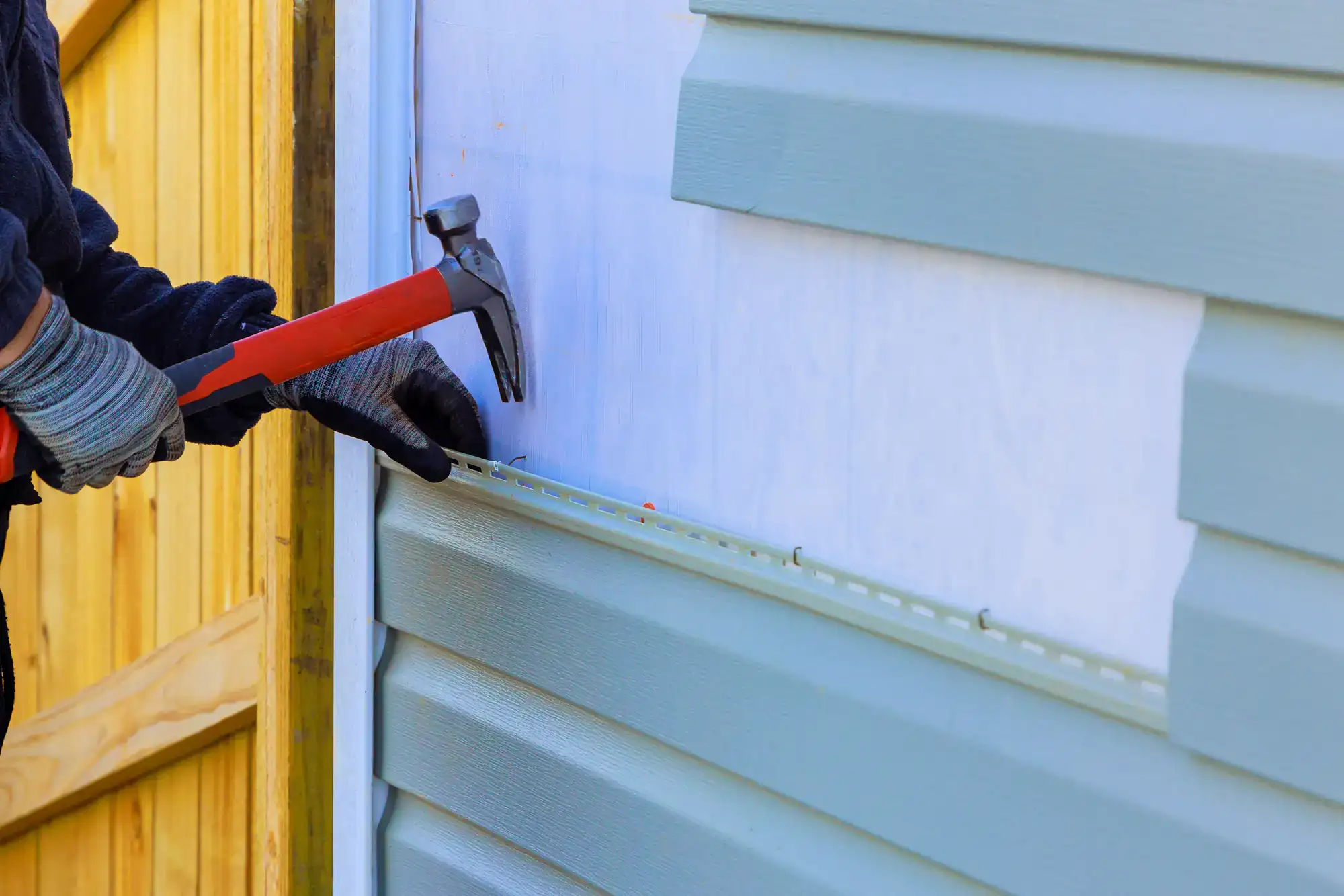
Your siding takes a beating from Long Island’s coastal storms, salt air, and temperature swings. When it’s working right, you don’t think about it. When it’s not, you’re dealing with drafts, high energy bills, and water damage that gets expensive fast.
Quality siding installation means you can stop checking the forecast with dread. No more wondering if that next storm will find the weak spots in your exterior. No more watching your energy bills climb because your home can’t hold temperature properly.
The right siding materials and proper installation create a barrier that handles everything Patchogue’s climate throws at it. You get consistent indoor comfort, lower energy costs, and the peace of mind that comes from knowing your home’s exterior is actually protecting what’s inside.
We’ve been handling Long Island’s exterior challenges for over two decades. We’re a family-owned company that understands what coastal weather does to homes in Patchogue and surrounding areas.
We’ve seen how salt air affects different siding materials. We know which products hold up to the humidity and temperature swings that come with living near the water. And we’ve learned that the installation process matters just as much as the materials you choose.
Our team serves homeowners throughout Suffolk County with the kind of straightforward service that keeps customers coming back. We show up when we say we will, explain what needs to be done without the sales pitch, and handle the work so it lasts.
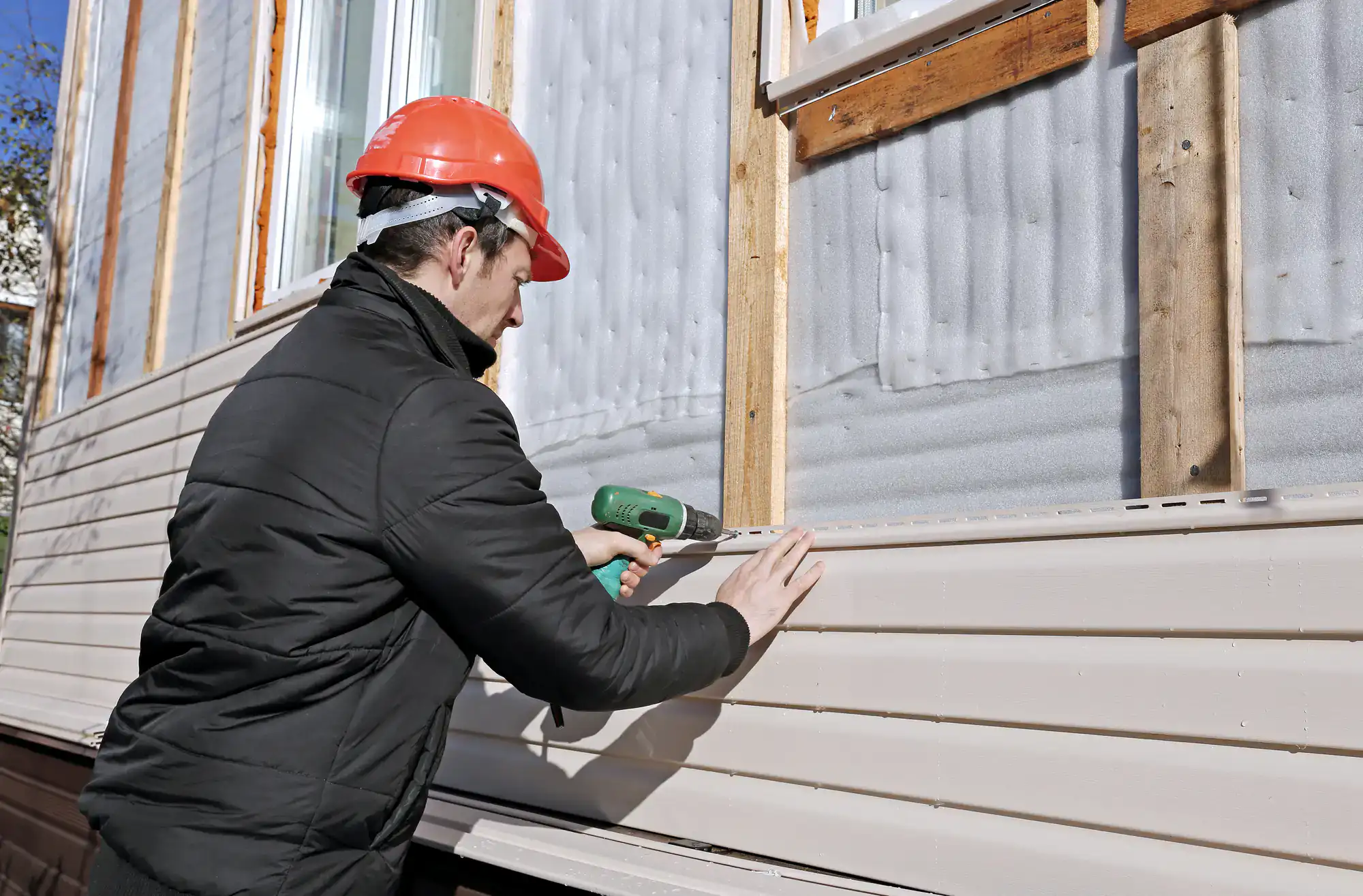
We start with a thorough inspection of your current siding and the structure underneath. This isn’t just looking at the surface – we check for moisture damage, proper ventilation, and any issues that could cause problems down the road.
Next, we walk through your material options based on your home’s specific needs and your preferences. We explain the differences between vinyl, fiber cement, and wood siding in terms that actually matter to you – durability, maintenance requirements, and how each performs in our coastal climate.
Once we’ve agreed on the approach, our installation team handles the removal of old materials and proper preparation of the surface. We install your new siding with attention to details like flashing, ventilation, and proper fastening that prevent future problems. The job isn’t done until we’ve cleaned up completely and walked through the finished work with you.
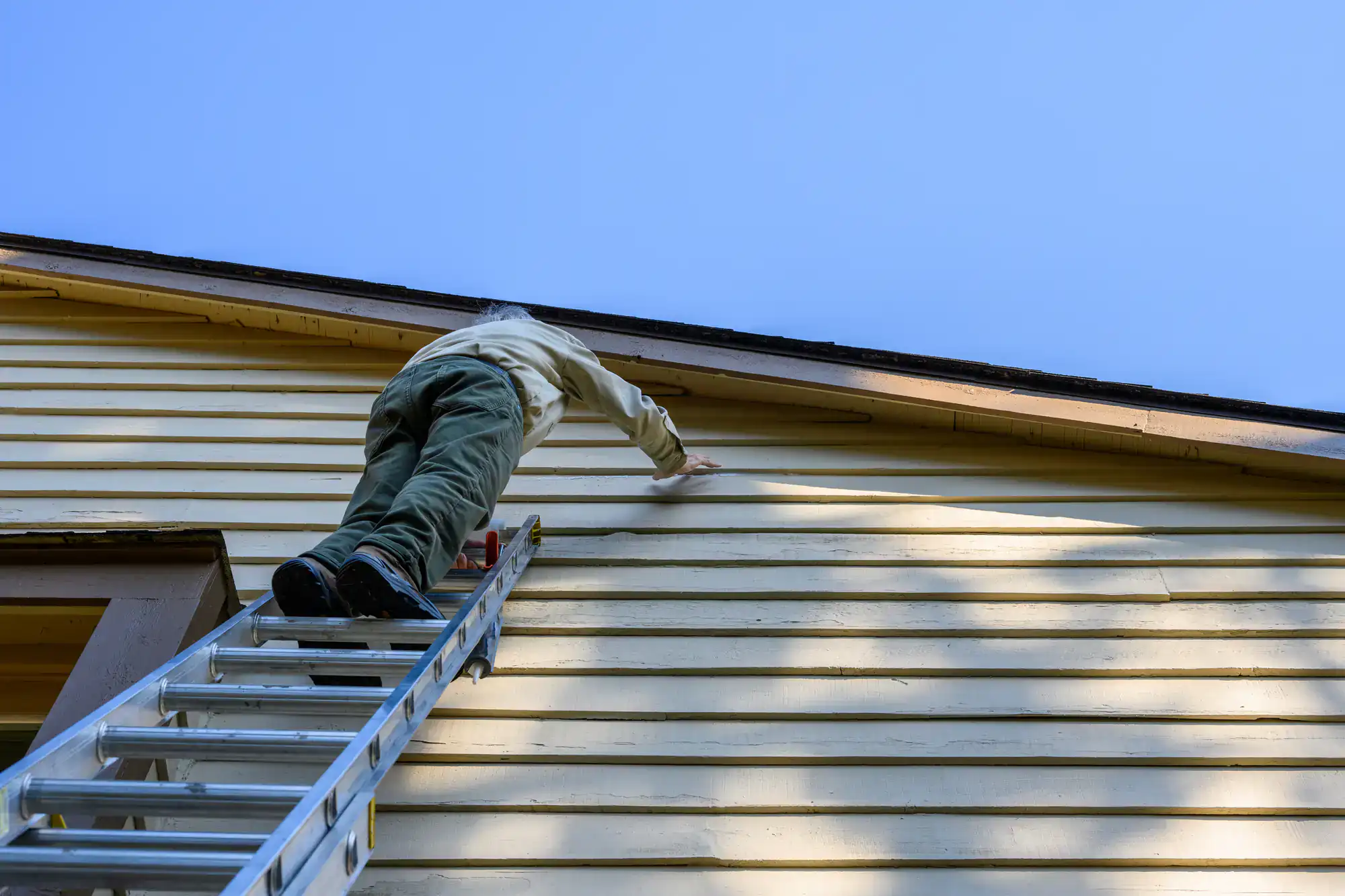
Ready to get started?
Patchogue homes face unique challenges from coastal weather patterns. We work with siding materials specifically chosen for their performance in salt air, high humidity, and the temperature extremes that come with Long Island’s climate.
Fiber cement siding offers excellent durability against moisture and impact damage. It resists the warping and rot that can affect other materials in humid conditions, and it handles the expansion and contraction that comes with our temperature swings. Vinyl siding provides low-maintenance protection with improved insulation properties and color retention that stands up to UV exposure.
Wood siding remains popular for its natural appearance, but it requires proper treatment and installation to perform well near the coast. We use materials and techniques that account for the moisture challenges specific to waterfront and near-waterfront properties in the Patchogue area.
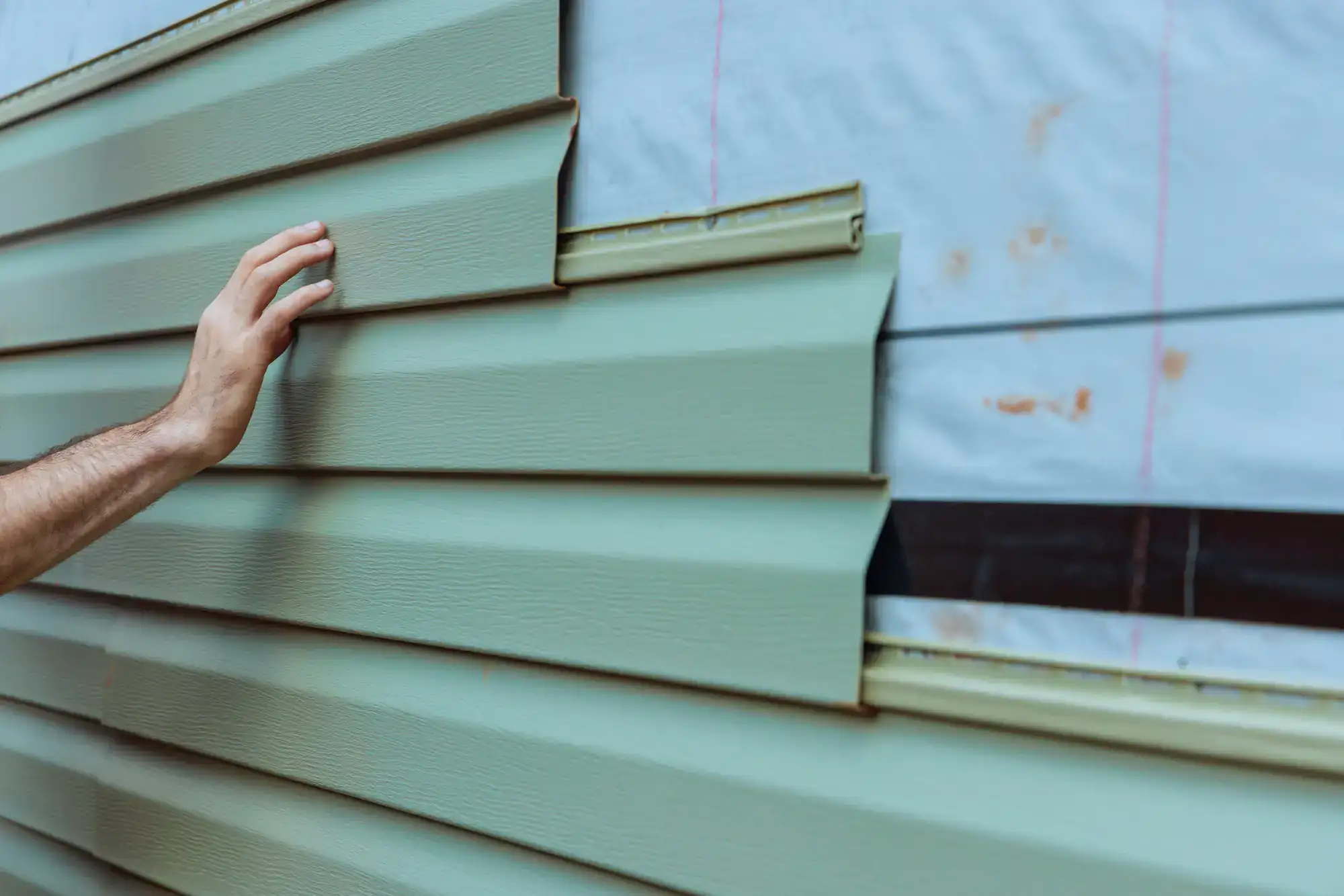
Fiber cement and high-quality vinyl siding perform best in coastal conditions like those around Patchogue. Fiber cement resists moisture absorption and won’t warp or rot from humidity and salt air exposure. It handles temperature changes well and provides excellent impact resistance against storm debris.
Vinyl siding with proper backing and insulation also works well for coastal homes. Modern vinyl products resist fading from UV exposure and won’t corrode from salt air. The key is choosing thicker gauge materials and ensuring proper installation with adequate ventilation behind the siding.
Wood siding can work but requires more maintenance in coastal areas. Cedar naturally resists moisture and insects, but any wood siding near the coast needs regular treatment and careful attention to prevent moisture intrusion that leads to rot and mold problems.
Quality siding properly installed should last 20-30 years in Long Island’s climate, but the timeline depends heavily on the material and installation quality. Vinyl siding typically lasts 20-25 years before showing significant wear, while fiber cement can go 30+ years with minimal maintenance.
The coastal environment around Patchogue can accelerate wear if the siding isn’t designed for these conditions. Salt air, high humidity, and frequent storms put extra stress on exterior materials. Signs it’s time for replacement include warping, cracking, frequent repairs needed, or noticeable increases in energy bills.
Regular maintenance extends siding life significantly. This includes cleaning, checking caulking around windows and doors, and addressing small issues before they become major problems. Homes that skip maintenance often need replacement 5-10 years earlier than those that stay on top of upkeep.
Installing new siding over existing materials is possible in some cases, but it’s not always the best approach. The existing siding needs to be in good structural condition with no rot, warping, or moisture damage. Any problems with the current siding will only get worse when covered up.
We typically recommend removing old siding so we can inspect and address the underlying structure. This lets us check for moisture damage, improve insulation, and ensure proper ventilation. It also allows for a cleaner installation that will last longer and perform better.
The cost savings from leaving old siding in place often aren’t worth the potential problems. Issues like trapped moisture, reduced ventilation, and compromised structural integrity can lead to expensive repairs later. A complete removal and fresh installation provides better long-term value and performance.
Moisture intrusion is the biggest cause of premature siding failure in coastal areas. Salt air accelerates corrosion of metal components, while high humidity can cause wood to rot and vinyl to become brittle. Poor installation that doesn’t account for coastal conditions makes these problems worse.
Inadequate ventilation behind the siding traps moisture and creates conditions for mold and rot. This is especially problematic in humid coastal climates where moisture needs multiple ways to escape. Improper flashing around windows, doors, and other penetrations allows water to get behind the siding where it causes damage.
Storm damage from high winds and debris is another common issue. Siding that isn’t properly fastened or designed for wind resistance can fail during storms, leading to water intrusion and expensive repairs. Quality materials and installation techniques that account for coastal wind patterns help prevent these failures.
Look for visible signs like warping, bulging, or sections that appear to be pulling away from the house. These indicate moisture has gotten behind the siding and affected the underlying structure. Soft spots when you press on the siding, or areas that sound hollow when tapped, suggest rot or damage underneath.
Check around windows, doors, and other openings for gaps in caulking or signs of water stains. These are common entry points for moisture. Inside your home, look for water stains on walls, peeling paint, or musty odors that could indicate moisture problems in the wall cavity.
High energy bills can also signal siding problems. If your heating and cooling costs have increased without changes to your usage patterns, damaged or poorly performing siding might be letting conditioned air escape and outside air infiltrate. A professional inspection can identify moisture damage that isn’t visible from the outside.
Vinyl siding offers lower upfront cost and minimal maintenance requirements. Modern vinyl products resist fading and cracking, and they won’t rot or corrode in coastal conditions. Installation is typically faster and less expensive than fiber cement. However, vinyl can become brittle in extreme cold and may not hold up as well to impact damage.
Fiber cement siding costs more initially but offers superior durability and longevity. It resists moisture, fire, and impact damage better than vinyl. Fiber cement can be painted any color and maintains its appearance longer in harsh coastal conditions. The main drawbacks are higher cost and more complex installation requirements.
Both materials work well in Patchogue’s coastal climate when properly installed. Your choice often comes down to budget, desired appearance, and how long you plan to stay in the home. Vinyl makes sense for shorter-term ownership or tighter budgets, while fiber cement provides better long-term value for permanent residents who want maximum durability.